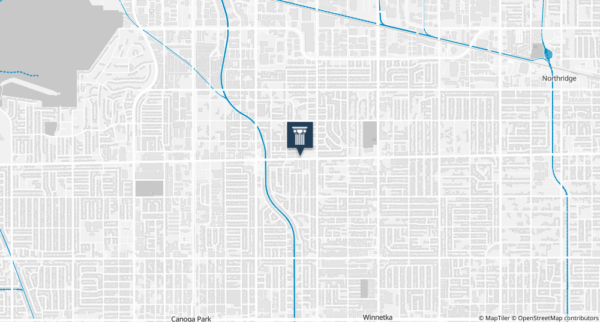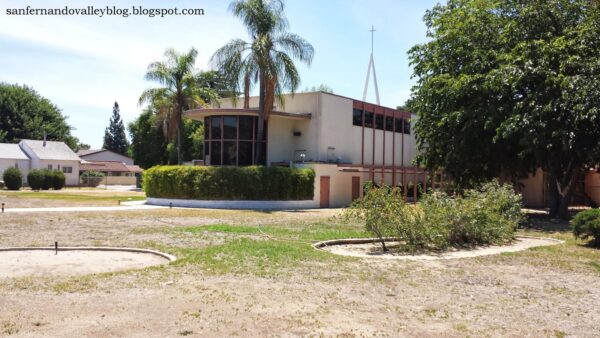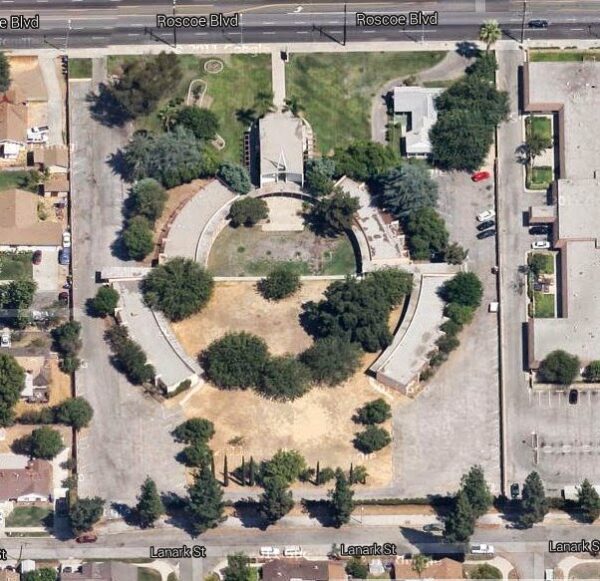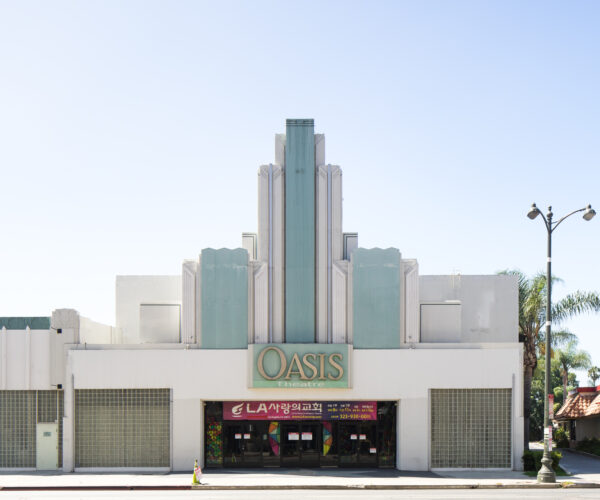
Place
St. John’s in the Valley Methodist Church (Demolished)
Designed in the Mid-Century Modern style, St. John's in the Valley Methodist Church reflected the San Fernando Valley's ethnic and religious diversity.
Lost
The campus was demolished in 2014.


Place Details
Address
Architects
Neighborhood
Year
Style
Property Type
Government Officials
Community

St. John's in the Valley Methodist Church, July 2013 | Courtesy of the San Fernando Valley Blog
Overview
St. John’s in the Valley Methodist Church, located in the heart of the San Fernando Valley, is believed to have been demolished in spring 2014 prior to the issuance of a demolition permit. The property owner has sought to redevelop the site since 2012.
Completed in 1959, St. John’s was an excellent example of Mid-Century Modern architecture in an ecclesiastical context and was reflective of the Valley’s ethnic and religious diversity.
In 2013, the SurveyLA field team evaluated the property and identified it as being eligible for designation on the National Register of Historic Places, the California Register of Historical Resources, and as a Los Angeles Historic-Cultural Monument (HCM).
In January 2014, the Los Angeles City Council adopted a Mitigated Negative Declaration (MND) for a condominium project, which did not acknowledge the presence of a known historic resource on the property. The applicant is now seeking to develop a small lot subdivision.
The property owner applied for a demolition permit on February 25, 2014, which was obtained on May 6, 2014. An entry (including photos) on the San Fernando Valley Blog on April 7, however, reveals that St. John’s had already been demolished, prior to the clearance of the permit.
About This Place
About This Place
Located in the Winnetka area of the west San Fernando Valley, St. John’s in the Valley Methodist Church was an excellent example of a Mid-Century Modern ecclesiastical campus. Southern California architect Reginald F. Inwood, who was responsible for a number of religious buildings and campuses in the region, designed the church to serve the growing number of families in the community after World War II.
The campus contained a two-story church building (1959) and four one-story classroom buildings (Albert Hoover, 1966), which were arranged in a horseshoe plan around a communal courtyard. Inwood incorporated a prominent cylindrical glass atrium into the church, reminiscent of his design for the Santa Anita Church of Religious Science in Arcadia the year before.
Other distinguishing elements of the church included metal spiderleg supports that framed side walkways and a minimally-designed metal spire. The classrooms featured floor to ceiling windows and large dividing walls.
The Methodist Church purchased the property on Roscoe Boulevard in 1957. When St. John’s opened its doors two years later, it primarily served families who had relocated to the Valley from the Midwest to work in the aerospace industry.
As the demographics of the Valley shifted over the next decade, the church played a meaningful role in supporting the arrival of new residents and families, regardless of ethnic or religious background.
In 1964, members of the congregation rallied in opposition to a ballot measure that sought to repeal California’s Rumford Fair Housing Act. In the early 1970s, the church was one of a handful of religious institutions in the Valley that held interfaith worship services with the goal of building a fellowship among the region’s diverse ethnic and religious communities.
More recently, the Filipino International Christian Church shared the St. John’s campus with the Methodist Church.
Our Position
Because St. John’s in the Valley Methodist Church had been previously identified as being eligible for the local, California, and National Register, its demolition resulted in a significant impact where an Environmental Impact Report (EIR) was required.
The Conservancy is concerned about the precedent that this project might set, as it reflects a growing trend in the City’s treatment of historic resources and the California Environmental Quality Act (CEQA). Similar questions have been raised with the demolition of the Mole-Richardson Studio Depot in June 2014 and the proposed demolition of the Sportsmen’s Lodge.
Furthermore, the Conservancy is troubled by the evidence indicating that the religious campus was demolished prior to the issuance of any permits.







